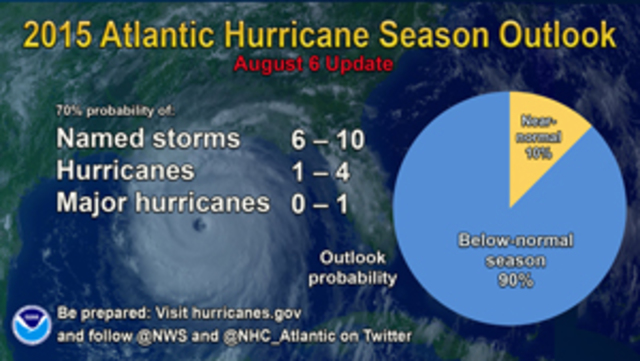-
Tips for becoming a good boxer - November 6, 2020
-
7 expert tips for making your hens night a memorable one - November 6, 2020
-
5 reasons to host your Christmas party on a cruise boat - November 6, 2020
-
What to do when you’re charged with a crime - November 6, 2020
-
Should you get one or multiple dogs? Here’s all you need to know - November 3, 2020
-
A Guide: How to Build Your Very Own Magic Mirror - February 14, 2019
-
Our Top Inspirational Baseball Stars - November 24, 2018
-
Five Tech Tools That Will Help You Turn Your Blog into a Business - November 24, 2018
-
How to Indulge on Vacation without Expanding Your Waist - November 9, 2018
-
5 Strategies for Businesses to Appeal to Today’s Increasingly Mobile-Crazed Customers - November 9, 2018
Atlantic on target for below-average hurricane season, says Tropical
All of the forecasts are in, and with the heart of the Atlantic hurricane season approaching, a quiet year still looks likely. The latest guidance suggests this year’s El Nino will last well past hurricane season and into the winter.
Advertisement
Today, the forecast team at Colorado State University’s Tropical Meteorology Project releases an updated forecast for the last two-thirds of the season. The Colorado State University team has lowered the seasonal forecast by one hurricane. The 3 tropical storms seen to date have only contributed 5 ACE points to date, meaning that the rest of the season has 35 to contribute.
A strong El Niño as well as “continued unfavorable hurricane formation conditions in the tropical Atlantic” are the main culprits behind the below-average forecast for the season, which runs from June 1 to November. 30.
The forecast team also tracks the likelihood of tropical storm-force, hurricane-force and major hurricane-force winds occurring at specific locations along the coastal United States, the Caribbean and Central America through its Landfall Probability website. El Niño, a climate pattern that affects weather worldwide, “is characterized by unusually warm temperatures” in the tropical Pacific, according to the National Oceanic and Atmospheric Administration.
“It creates extra wind shear over the breeding grounds”, Keim explained.
As a result; “The probability of U.S. major hurricane landfall and Caribbean major hurricane activity for the remainder of the 2015 season is estimated to be well below its long-period average”.
The report from researchers in Fort Collins, Colorado continues to forecast a well-below-average 2015 hurricane season, calling for only two of the eight named storms to become hurricanes and just one to reach major hurricane strength, with sustained winds of 111 miles per hour or more.
However, the hurricane center upped the odds of tropical storm development from 10 percent to 30 percent Tuesday. In 2014, they predicted three hurricanes and six formed (though their prediction of 8 named storms was quite close to what happened: 9).
Advertisement
The below-average forecast is due to a combination of factors.





























